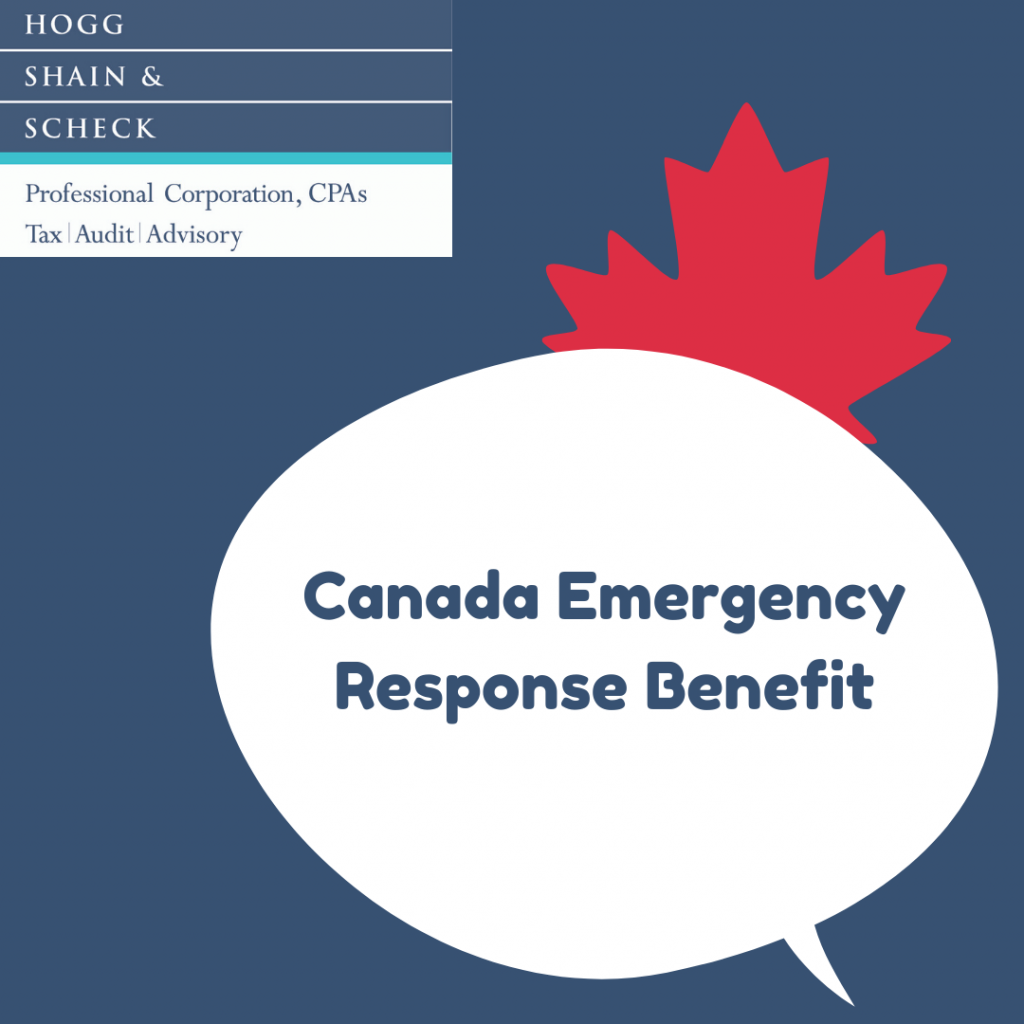Canada Emergency Response Benefit
What is the Canada Emergency Response Benefit (CERB)?
On March 25, 2020, the government proposed legislation to establish the Canada Emergency Response Benefit (CERB). This taxable benefit would provide $2,000 a month for up to four months for workers who lose their income as a result of the COVID-19 pandemic. The CERB would be a simpler and more accessible combination of the previously announced Emergency Care Benefit and Emergency Support Benefit.
Who is Eligible for the Emergency Response Benefit?
The CERB would cover Canadians who have lost their job, are sick, quarantined, or taking care of someone who is sick with COVID-19, as well as working parents who must stay home without pay to care for children who are sick or at home because of school and daycare closures. The CERB would apply to wage earners, as well as contract workers and self-employed individuals who would not otherwise be eligible for Employment Insurance (EI).
Additionally, workers who are still employed, but are not receiving income because of disruptions to their work situation due to COVID-19, would also qualify for the CERB. This would help businesses keep their employees as they navigate these difficult times while ensuring they preserve the ability to quickly resume operations as soon as it becomes possible.
All Canadians who have ceased working due to COVID-19, whether they are EI-eligible or not, would be able to receive the CERB to ensure they have timely access to the income support they need.
If You Are Already Receiving EI Should You Apply for CERB?
Canadians who are already receiving EI regular and sickness benefits, as of today, would continue to receive their benefits and should not apply to the CERB. If their EI benefits end before October 3, 2020, they could apply for the CERB once their EI benefits cease, if they are unable to return to work due to COVID-19. Canadians who have already applied for EI and whose application has not yet been processed would not need to reapply. Canadians who are eligible for EI regular and sickness benefits would still be able to access their normal EI benefits, if still unemployed, after the 16-week period covered by the CERB.
How Do You Apply for the Canada Emergency Response Benefit?
The portal for accessing the CERB will be available in early April. EI-eligible Canadians who have lost their job can continue to apply for EI.
When Will You Receive CERB?
Canadians would begin to receive their CERB payments within 10 days of application. The CERB would be paid every four weeks and be available from March 15, 2020 until October 3, 2020. The government has confirmed that this benefit is taxable.
How is CERB Different than EI?
Unlike EI, Canadians will not have to prove they qualify under a stringent set of rules. The self-employed will qualify, including business owners. Even workers who haven’t lost their job can collect – if they are no longer being paid and are laid off, that will be enough to allow them to receive CERB payments. To confirm, workers that are employed but not paid are eligible to receive payments.
The CERB is not tied to the recipient’s previous employment income, unlike EI. All recipients will be paid $2,000 per month.
This flat amount of $2,000 will disproportionately assist recipients at the lower end of the income scale. It is estimated that the CERB would replace 89 percent of the lost income of a minimum-wage employee in Ontario working a 40-hour week. EI benefits would replace just 55 percent of that employment income.
As one’s income rises, the CERB becomes relatively less attractive. The maximum payment under the CERB is $500 a week, but EI weekly payments top out at $572 a week. Once a worker’s annual income exceeds $47,272, he or she would be better off under EI than the new program.






